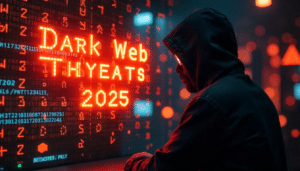The digital threats in the technology world are getting sophisticated by the day, and I have seen companies realize that they have no other option but to have a proper consensus on the procedures and processes with which they deal with such threats. As a professional thoroughly involved in the industry, I can tell you that GRC Cyber Security has emerged as a main frame for tackling these problems. This is a write-up which has the goal of providing a deep analysis of GRC Cyber Security, its components, benefits, and implementation strategies.
What is GRC?

Governance, Risk, and Compliance, or GRC, is essential in cybersecurity because it enables businesses to successfully manage risk, match IT plans with business objectives, and maintain regulatory compliance.
- Governance: A system of an organization that is managed well through directives, policies, and regulations which are designed to guide decision-making.
- Risk Management: The classical and systemic treatment for identifying, assessing, and actioning the threats that may affect the organization’s objectives or operations if they occur.
- Compliance: Conformity to the rules by ensuring that business is run according to the regulatory requirements, the codes of practice laid down, and the internal policies set by the management.
Why GRC is Important for Organizations
GRC is crucial because it is the foundation that protects the companies from unwanted incidents. Moreover, it is a tool that every organization uses to abide by the law, procure better products and technologies, and ultimately, manage the thermal environment of their business units. One of the many benefits of GRC is that businesses can catch the problems earlier and avoid costs that may otherwise arise.
By integrating GRC into everyday processes, businesses can proactively identify problems, minimize costly disruptions, and make more informed decisions.
Key Components of GRC
There are 3 key components of GRC:
1. Governance: Organizational Oversight
Governance is also about managing a company’s business activities. It consists of some structural elements such as norms and methods, which are used to take strategic decisions. Besides, a sound governance system guarantees the fact that a business acts in a proper manner in an appropriate manner.
2. Risk Management: Reducing Exposure
Risk management is about identifying and addressing the issues that may become a threat to the well-being of a company. It may be financial, security, or some kind of danger that a company faces. The goal of a company should be to minimize these risks as much as possible.
3. Compliance: Meeting Legal Obligations
Effective compliance governance ensures that businesses align with legal mandates, industry standards, and ethical practices. By maintaining a well-documented compliance and governance framework, organizations reduce the risk of penalties and reputational damage.
Benefits of GRC Programs
A strong compliance governance framework provides a structural approach to risk reduction and legal alignment, enabling scalability and consistency across business units.
1. Improved Decision-Making
GRC makes organizations make correct decisions. It gives the leaders an idea of the prevailing scenario in the company that makes them take wiser decisions that are favorable to the company on the whole.
2. Enhanced Risk Mitigation
GRC has the ability to spot areas of risk in the most efficient manner possible for businesses. As a result, they will not be faced with the kinds of great problems that cause doom to the business.
3. Cost Savings and Efficiency
GRC allows companies to cuts down on their expenses. The tools help eliminate the losses that would occur on fixing the mistakes and at the same time, increase productivity. When the whole entity behaves as the well-known Machine with parts in harmony, it becomes easier to get jobs done.
The Role of GRC in Cyber Security
GRC, in the context of cybersecurity, plays the role that connects information security activities to the goals of the business. The structure ensures that legal consequences, cybersecurity risks, and stability of an organization are managed properly through the integration of the components. By implementing these tactics, GRC helps companies to form a comprehensive plan that covers all the problems of the era of the digital transformation.
How GRC Applies to Information Security
Information security GRC, a practice in the digital world that includes aspects of GRC, is a program that works together in this context. Its main objective is to secure private data, which it is doing by enforcing security rules and ensuring risk is properly managed. This is how information is protected from hackers and similar threats.
Cybersecurity Tools That Support GRC
Special tools aimed at GRC in cybersecurity are available. The functionality of these tools is assessing the systems for security issues, dealing with risks and detecting non-compliance of rules among the other tasks. With these tools, you will malicious intend to encrypt your stuff thus they make the process of keeping order improved.
How to Build a GRC Cyber Security Strategy
1. Assessing Your Current Cybersecurity Posture
The foremost step in bringing to pass a GRC strategy is to deploy a thoro evaluation of the current condition of your organization’s security state. Doing this involves:
- Researching into the issue of the current security controls and their efficacy
- What are the current management of risk processes to be compared against a prescribed template of a risk framework?
- Monitoring the level of compliance with relevant regulations, standards, and recommendations
- Finding the places where the added security is needed
2. Defining Goals and Objectives
Based on the review, case clear performance and compliance goals for the GRC will be only operational goals. This will include:
- Concatenating aligning objectives with the overall business goal, e.g. improve IT outcomes and business performance
- Correcting the issues you have spotted that are missing or do not meet the critical and necessary points (goals)
- As for the goals (being more specific and measurable) to inform on the improvement of both risk control implementation and compliance
3. Selecting the Right Tools and Technologies
GRC implementations typically require specific technologies and tools. For instance:
- The GRC platforms that cover all the governance, risk management and compliance functions
- Risk assessment and management tools
- Compliance management software
- Security information and event management (SIEM) software
4. Continuous Monitoring and Improvement
A GRC structure is a continuing action that needs a regular checking and reworking. This includes:
- Regularly inspecting the characteristics of executed controls to determine whether uniDimensional Security is met well
- Introduction of the latest threats serves to review the risks and keep them in check to the conclusion
- Routine investigations to ensure that the organization complies with the latest standards and regulations, e.g. ISO 2700X
- Leverage the lessons learned from past incidents, in order to incorporate them into the GRC framework performance improvements
Challenges in Implementing GRC in Cyber Security
Balancing Flexibility and Control
Being too rigid in restraining the organization can be as counterproductive as allowing for slackness. The organization should be able to:
- Create flexible policies that might be capable of any kind of quick changes rations
- Implement the necessary security measures that would not interrupt the usual operations
- Develop a culture of security consciousness, which goes beyond key employees to the employees making informed decisions
Keeping Up with Evolving Regulations
The regulatory field of data security is frequently transformed thus promising new opportunities but also puzzles like:
- Becoming aware of the rules that are new or changed regularly.
- Modifying compliance activities, (e.g., training, roles of compliance people and so on.) to fit new requirements
- Certainly, a global corporation managing compliance on multiple jurisdictions require more resources
Overcoming Resistance to Change
Carrying through the GRC arrangements most of the time requires some kind of process or cultural change. One workable method could be through:
- Getting approval from the management and the shareholders
- Giving information about GRC benefits to the levels of organization
- Training and support to employees to adapt to new operations
Real-World Examples of GRC Success
Companies like the GRC group have helped financial institutions implement governance, risk, and compliance systems tailored for regulatory efficiency and cyber resilience.
Case Study 1: Financial Sector
A leading multinational bank put in place a full-fledged GRC program and thus was able to achieve:
- Decreased security incidents by 30%
- Improved regulation adherence across various regions
- Improved capacity to recognize and handle potential cyber threats through improved security and compliance processes
- Significant cost saving through more streamlined security and compliance process
Case Study 2: Healthcare Industry
A huge hospital directed its own transformation, during which it adopted a GRC framework. The outcome were as follows:
- Data breaches were reduced by 40%
- Compliance was easier with HIPAA and reduced audit findings
- In addition to being very effective in the allocation or redistribution of security resources depending on the level of the risk organization, the right framework also fostered synergy by bringing the domain together
- The implications of the trust benefit on the ecosystem are vast
The Future of GRC in Cyber Security
Emerging Trends
As GRC becomes a more prominent part of cybersecurity, we note some of the trends that are emerging:
- The use of artificial intelligence technologies and machine learning systems to empower the risk management process through more sophisticated analytics procedures
- Adoption of cloud-based GRC applications where businesses enjoy the benefits of flexibility, scalability and can access data from different global regions
- The escalated emphasis on privacy guidelines in reaction to the evolving regulations
- Supply chains are a growing concern and hence receiving a lot of attention from GRC frameworks
Predictions for GRC in Cyber Security
Ongoing the movement, we are already at now we can expect to see:
- GRC will now be a part of total organizational strategy and not just a stand-alone security operation
- As a result of more proactive monitoring, GRC operations will automate to be more real-time oriented, which will enable the management of risks to happen in faster time
- Overall combining GRC into other business areas such as operations and finance could result in GRC being more integral than it is today
- As a result, the GRC jobs of the future are likely to call for skills that are broader than the ones that have been required in the past such as data analytics and business acumen
FAQs
What does GRC stand for in cyber security?
GRC stands for Governance, Risk Management, and Compliance. As a cybersecurity concept, it focuses on integrated mechanisms managing these three vital elements of data protection.
Why is GRC important in cyber security?
GRC is essential in cybersecurity because it offers a well-tuned operational system for sorting security tasks by relevance, ultimately facilitating streamlined and harmonized practices which foster better compliance as well.
What are the key steps to building a GRC framework?
Among these elements are legalization of security standards: The variance of typical losses attackers( hackers) make is different from the loss typical individuals or organizations make which gives us the possibility of not being able to deny what has happened. Conversely, it tells how we can allow “standards” to the extent that verification of authenticity can take place. At B level we must be able to deselect the IE – Enable in the security process.
Which industries benefit most from GRC cyber security?
GRC can be advantageous in all organizations but the robustness of their implementation usually has the biggest impact on the healthcare, finance, and government sectors. They work with the classified material or/and in a strictly regulated environment and such implementation has the most relevance to them.
How does GRCimprove cybersecurity efficiency?
GRC is a potting of IT Governance, Risk Management & compliance so if we see the improvements in these sections we actuality. They guarantee a unified approach to the protection of an organization. This was topped off by the announcements of security budgets being developed on the basis of the real modern requirements and the more efficient production environments demanded



